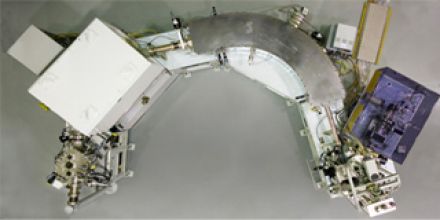Hadean zircon mining
Small zircon crystals found in sediments from the Jack Hills, Western Australia are the oldest terrestrial materials yet identified and provide a unique perspective on Earth's early history, before the start of the preserved rock record at about 4 Ga. The difficulty is that the most ancient zircons, with ages >4 Ga...
Project status
Content navigation
About

Small zircon crystals found in sediments from the Jack Hills, Western Australia are the oldest terrestrial materials yet identified and provide a unique perspective on Earth's early history, before the start of the preserved rock record at about 4 Ga. The difficulty is that the most ancient zircons, with ages >4 Ga are only a small percentage of the zircon population in the rock. The U-Pb zircon age of each zircon must be individually determined in order to identify those of the most interest. To be able to rapidly survey the ages of zircons we have developed a new automated method were epoxy mounts containing hundreds of zircon grains can be rapidly surveyed using one of our SHRIMP ion probes. Using this approach more than 100,000 zircon grains have been surveyed with more than 5000 grains older than 4 billion years identified. T
he oldest grains are about 4.4 Ga, only 150 million year younger than the age of the solar system (4.57 Ga). As the SHRIMP ion probe analyses are largely non-destructive, the rest of the grain, once the age is determined can then be used in a variety of isotopic studies including determining the temperatures at which the zircon crystallized (Ti thermometry), the chemistry of the host rocks using trace elements compositions of the zircon and the nature of magmatic fluids in the Hadean (oxygen isotopes).
